In this blog post, we’ll take you on an exciting journey through the evolution of jewelry.
Whether you’re a history buff, a fashion enthusiast, or simply someone who appreciates jewelry’s timeless charm, this post has something for everyone.
We’ve researched the rich history of adornment across various cultures and civilizations, uncovering interesting insights into how jewelry has symbolized beauty, status, and cultural identity.
From ancient to modern times, jewelry has reflected societal beliefs, religious rituals, social hierarchies, and technological advancements.
So, let’s join this glittering adventure and uncover the timeless glamour of jewelry!
Ancient Beginnings of Jewelry
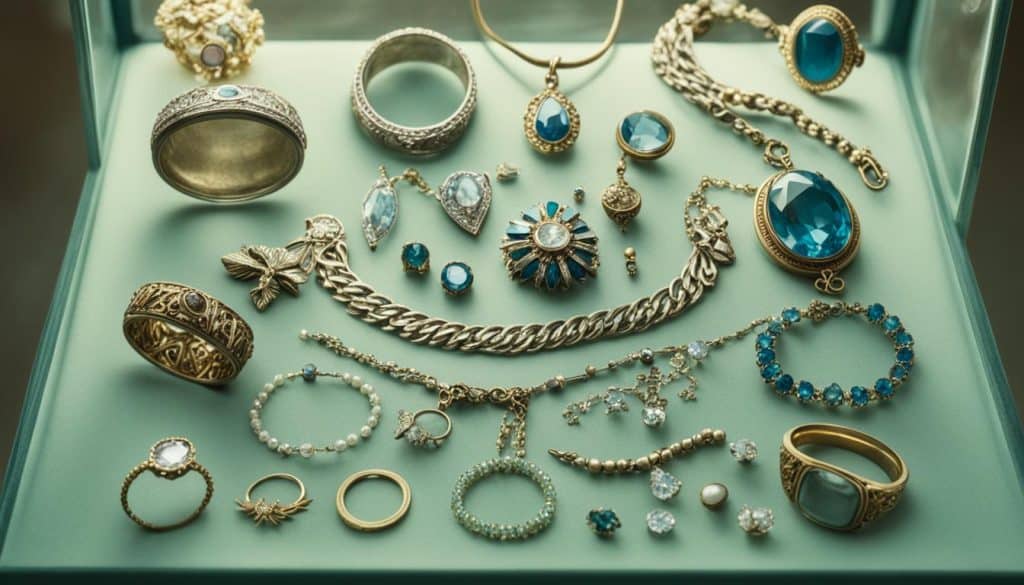
1. Prehistoric Times
The origins of jewelry can be traced back to prehistoric times when early humans began adorning themselves with natural materials like shells, bones, and stones.
These readily available resources were used for decorative purposes and held symbolic and ceremonial significance.
Bead necklaces made from shells, often found in prehistoric graves, suggest that jewelry might have been used in spiritual ceremonies or as a status symbol.
2. Egypt
As civilizations advanced, so did the techniques and materials used in jewelry-making.
Ancient Egyptians were among the first to work extensively with gold, crafting intricate pieces that often depicted religious symbols and deities.
Lapis lazuli, a vibrant blue semi-precious stone, was highly prized and frequently used in Egyptian jewelry.
Amulets were worn for protection and good luck, while pharaohs and nobles were buried with elaborate jewelry to ensure their status in the afterlife.
The iconic burial mask of Tutankhamun, adorned with gold and precious stones, exemplifies the significance of jewelry in ancient Egyptian culture.
3. Mesopotamia
In Mesopotamia, skilled artisans developed advanced metalworking techniques, such as filigree, which involved creating delicate patterns using fine wire.
Jewelry served not only as a form of artistic expression but also as a type of currency and religious offering.
Cylinder seals, intricately carved with scenes and symbols, were worn as adornments and used to make impressions on clay tablets.
Mesopotamian jewelry often featured gemstones like lapis lazuli and carnelian, as evidenced by the stunning pieces discovered in archaeological sites.
Classical Antiquity Period
The jewelry of classical antiquity, particularly that of ancient Greece and Rome, showcased a high level of sophistication and symbolism.
1. Greek Jewelry
Greek artisans were renowned for their skill in working with gold, creating intricate pieces that often featured gemstones such as emeralds, amethysts, and pearls.
Their designs frequently depicted scenes from Greek mythology, including gods, goddesses, and heroes, as well as nature-inspired motifs like leaves, flowers, and animals.
The famous gold wreaths, resembling real foliage, were worn during ceremonies and significant events, showcasing the Greeks’ skill in jewelry-making.
2. Roman Jewelry
In ancient Rome, jewelry was a clear indicator of social status, with elaborate designs showcasing the wearer’s wealth and prestige.
Roman jewelry was heavily influenced by earlier Greek and Etruscan styles.
It incorporated techniques such as granulation (using small gold spheres) and filigree, which were adopted from the Etruscans.
Gemstone-encrusted rings and necklaces were popular among the Roman elite, featuring precious stones like sapphires, diamonds, emeralds, and pearls.
Signet rings, often bearing the owner’s initials or emblem, were not only decorative but also served a practical purpose.
They were used to seal documents and signify the wearer’s social standing.
Medieval and Renaissance Periods
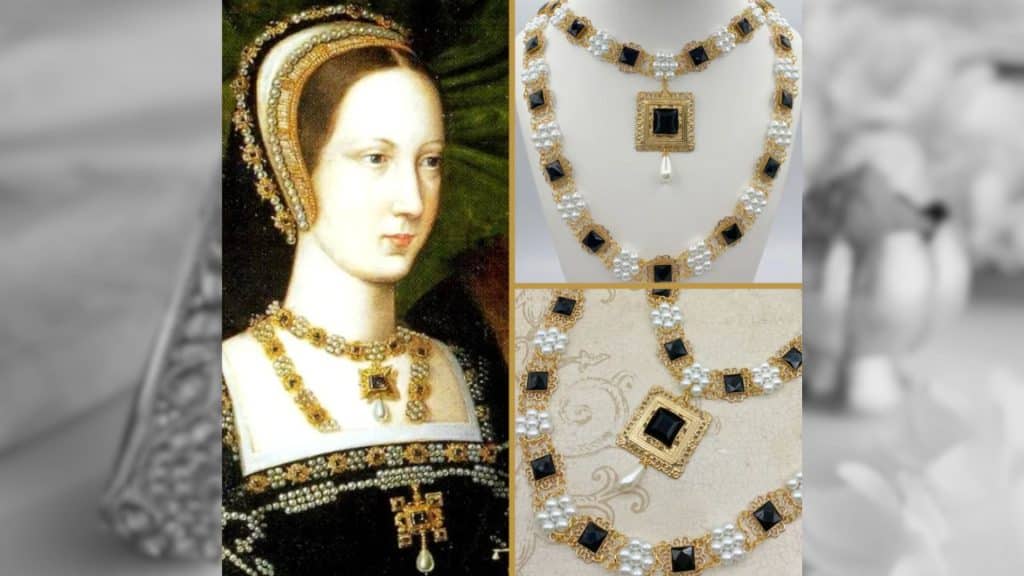
1. Medieval Jewelry
During the medieval period, jewelry held significant religious and cultural importance.
Pieces often featured religious symbols such as crosses, saints, and holy relics, which allowed individuals to express their faith and devotion.
The rise of Christianity had a profound impact on jewelry design, with common motifs including the cross, the ichthys (fish symbol), and depictions of biblical scenes.
Pilgrim badges, typically made of pewter, were worn by travelers to signify their journeys to holy sites. This demonstrates the intersection of faith and adornment during this era.
2. Renaissance Jewelry
As the Renaissance dawned, jewelry design experienced a revival of classical themes and a remarkable advancement in craftsmanship.
Renaissance jewelry saw a return to the motifs of ancient Greece and Rome, with designs featuring mythological figures, animals, and floral patterns.
This period is renowned for its intricate and elaborate jewelry, showcasing the skill of artisans through detailed cameos carved from gemstones, intricate engravings, and advanced gemstone settings.
Enameled lockets, often containing miniature portraits or religious imagery, exemplify the fusion of artistic mastery and personal significance in Renaissance jewelry.
Baroque and Rococo Eras
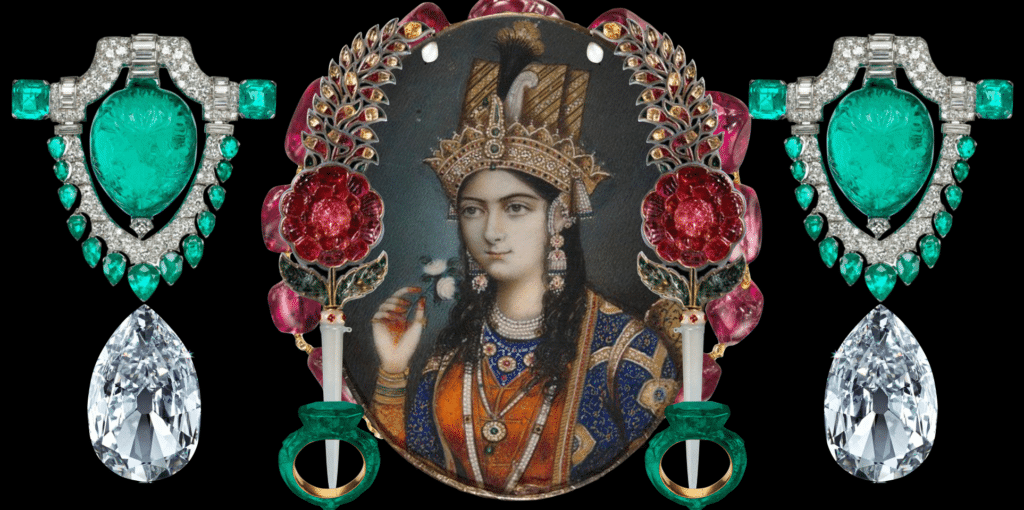
1. Baroque Jewelry
The Baroque period in jewelry design was characterized by its dramatic and abundant nature, reflecting the grandeur and extravagance of the time.
Baroque jewelry featured bold, extravagant designs that showcased large gemstones and pearls, creating a striking and dramatic effect.
These pieces were designed to reflect the courtly elegance and luxury of the royal courts, often large and ornate, to clearly state wealth and status.
Baroque pearls, with their unique, irregular shapes in elaborate necklaces and earrings, exemplify the distinctive beauty and grandeur of Baroque jewelry.
2. Rococo Jewelry
As the Rococo era emerged, jewelry design shifted towards more intricate and delicate styles, drawing inspiration from nature.
In contrast to the bold Baroque designs, Rococo jewelry featured motifs such as flowers, leaves, and other natural elements, creating a sense of lightness and elegance.
Filigree work, which involves crafting intricate designs using fine wires, became prevalent during this period, adding to the delicate appearance of the pieces.
Gemstones were often set in clusters, further enhancing Rococo jewelry’s ornate and detailed nature.
Brooches and pendants with detailed floral designs, made with filigree and small gemstone clusters, showcase the elegant, nature-inspired style of the Rococo era.
Victorian Era of Jewellery
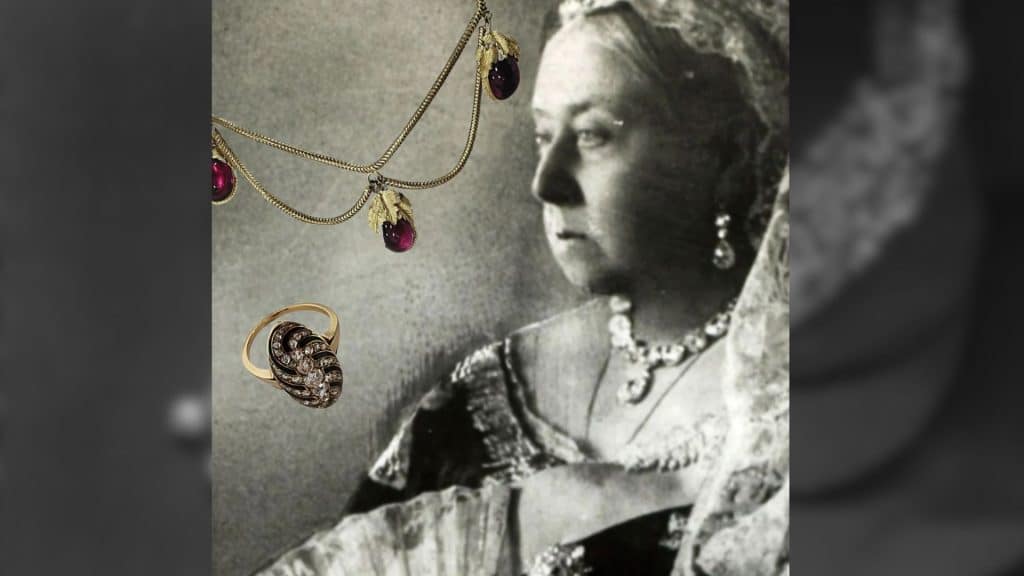
Victorian jewelry is renowned for its emotional depth and intricate designs, reflecting the sentimentality and personal significance that characterized the era.
Pieces often carry deep emotional and symbolic meanings to commemorate personal milestones, relationships, and cherished memories.
Mourning jewelry became particularly prominent during Queen Victoria’s reign, especially following the death of her beloved husband, Prince Albert.
These somber pieces often featured black enamel and incorporated hair from the deceased, serving as tangible mementos of love and loss.
Lockets and acrostic jewelry were also popular during the Victorian era, offering a means to convey secret messages and sentiments.
Lockets, designed to hold portraits or locks of hair, symbolized love and remembrance, allowing the wearer to keep their loved ones close to their heart.
Acrostic jewelry cleverly used the first letters of gemstones to spell out hidden messages; for example, a piece featuring a ruby, emerald, garnet, amethyst, ruby, and diamond would represent the word “REGARD.”
These ingenious designs added a layer of meaning and personalization to Victorian jewelry.
Art Nouveau and Art Deco Movements

1. Art Nouveau
The Art Nouveau movement in jewelry design holds the beauty of organic forms and nature-inspired motifs, creating pieces characterized by curved, flowing lines and dynamic shapes.
Designers drew inspiration from the natural world, often depicting elements like flowers, leaves, and insects, imbuing each piece with fluidity and vitality.
To enhance the organic aesthetic, jewelers frequently incorporate vibrant colored gemstones such as opals, amethysts, and peridots.
Enamel, particularly in techniques like plaque-à-jour, which creates a stained-glass effect, was extensively used to add color and depth to the designs.
A quintessential example of Art Nouveau jewelry is a brooch shaped like a dragonfly.
Its intricately detailed wings, crafted from enamel and gemstones, embody the movement’s naturalistic and artistic approach.
2. Art Deco
In stark contrast, the Art Deco movement in jewelry design holds a bold, geometric, and modernist aesthetic, reflecting the Jazz Age’s cultural dynamism and progressive spirit.
Art Deco pieces were characterized by their use of geometric shapes, symmetry, and clean, streamlined lines.
Common motifs included rectangles, circles, and zigzags.
The era’s fascination with progress and innovation heavily influenced this emphasis on order and modernity.
The Art Deco period also saw the increased use of materials like platinum and the development of new gemstone-cutting techniques, allowing for the creation of intricate, eye-catching designs.
A pair of Art Deco earrings featuring sharp, angular shapes set with diamonds and onyx perfectly illustrates the movement’s focus on contrast and precision.
The Art Nouveau and Art Deco movements in jewelry design showcase the profound influence of cultural, artistic, and societal shifts on the evolution of adornment.
Each style embodies the unique spirit and aesthetics of its time.
Modern and Contemporary Jewelry
1. 20th Century
In the 20th century, we have witnessed a remarkable diversity and innovation in jewelry styles, largely influenced by the era’s significant social and artistic changes.
As societal norms evolved, so did the aesthetics and accessibility of jewelry.
Mass production techniques made jewelry more widely available to the general public, no longer reserving it solely for the elite.
The early 20th century saw jewelry heavily influenced by the Art Nouveau and Art Deco movements.
Art Nouveau pieces were characterized by their organic, flowing designs inspired by nature, while Art Deco emphasized geometric shapes and modernist themes.
The shift from Art Nouveau’s intricate, nature-inspired motifs to Art Deco’s bold, geometric designs highlights the significant changes in artistic influences during this time.
2. 21st Century
Moving into the 21st century, contemporary jewelry has been marked by a focus on innovation, minimalism, and ethical considerations.
Avant-garde designs that push the boundaries of traditional jewelry-making have gained prominence, showcasing the limitless creativity of modern artisans.
Simultaneously, minimalist designs featuring clean lines and simple forms have become increasingly popular, reflecting a modern aesthetic that values simplicity and understated elegance.
In addition to style, the 21st century has seen a growing emphasis on sustainability and ethical sourcing within the jewelry industry.
Consumers increasingly demand transparency regarding the origins of materials and the ethical practices of manufacturers.
As a result, brands that use recycled metals and ethically sourced gemstones are becoming more prevalent, catering to a market that prioritizes environmental and social responsibility.
Trends in Jewelry
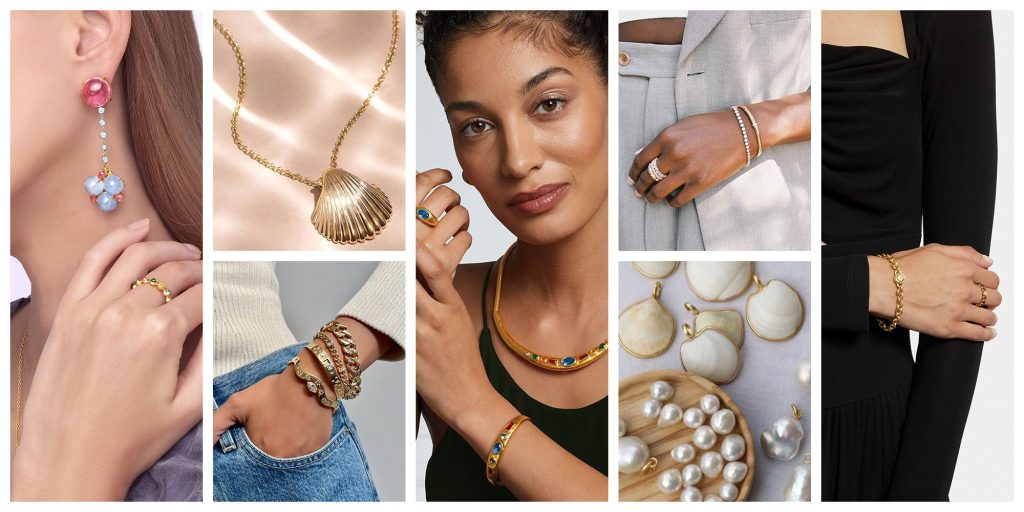
1. Pearls
Pearls have long been cherished for their timeless elegance and versatility, making them popular in classic and modern jewelry designs.
The enduring appeal of pearls lies in their ability to complement various styles, from formal attire to more casual looks.
While traditional pearl necklaces and earrings remain beloved staples, contemporary designers incorporate pearls innovatively in minimalist settings or combine them with other materials like gold or silver chains.
These fresh interpretations, such as pearl chokers and layered necklaces, cater to various tastes and demonstrate the adaptability of these luminous gems.
2. Geometric Designs
Another notable trend in jewelry design is the influence of geometric shapes, drawing inspiration from the bold and structured aesthetics of the Art Deco era and the clean lines of modern minimalism.
These pieces often feature sharp angles, symmetry, and intricate patterns, creating a striking visual impact.
A prime example of this trend is a pair of geometric earrings with triangular shapes and intricate cutouts, showcasing the perfect fusion of Art Deco influence and contemporary style.
3. Personalized Jewelry
In recent years, there has been a growing demand for personalized jewelry that reflects individual stories and unique identities.
Custom designs, such as name necklaces, engraved bracelets, and bespoke rings, allow wearers to express their narratives through adornments.
Using birthstones, initials, and meaningful engravings, like the coordinates of a special location, adds a deeply personal touch to these pieces, making them cherished symbols of the wearer’s journey.
4. Bohemian and Nature-Inspired
The allure of bohemian and nature-inspired jewelry lies in its free-spirited and organic aesthetic.
These pieces often incorporate natural materials like wood, stones, and feathers, conveying a sense of individuality and connection to the earth.
Designs featuring floral, leaf, and animal motifs are particularly popular, as they evoke the beauty and vitality of the natural world.
A necklace with a leaf-shaped pendant, crafted from recycled silver and adorned with semi-precious stones, exemplifies this trend, combining eco-consciousness with an appreciation for nature’s artistry.
5. Sustainable and Ethical Jewelry
As consumers become increasingly aware of their purchases’ environmental and social impact, the jewelry industry increasingly emphasizes sustainable and ethical practices.
Many jewelers are adopting eco-friendly approaches, such as using recycled metals and ethically sourced gemstones, to create pieces that align with their customers’ values.
Fairtrade practices, ensuring that artisans are fairly compensated and work in safe conditions, are also gaining prominence.
A ring made from recycled gold and set with a lab-grown diamond exemplifies how jewelry can embody both style and sustainability, appealing to the conscientious modern consumer.
Conclusion
The journey through the history of jewelry has revealed a fascinating story of human creativity, cultural expression, and the lasting power of adornment.
From ancient to modern times, jewelry has evolved alongside society, reflecting each age’s values, beliefs, and aesthetics.
As we look to the future, the art of jewelry-making will continue to innovate and adapt, embracing new materials, techniques, and designs while honoring the rich legacy of the past.
Whether you love pearls’ timeless elegance, Art Deco’s bold geometry, or modern ethical and sustainable practices, there is a piece of jewelry that matches your unique style and story.

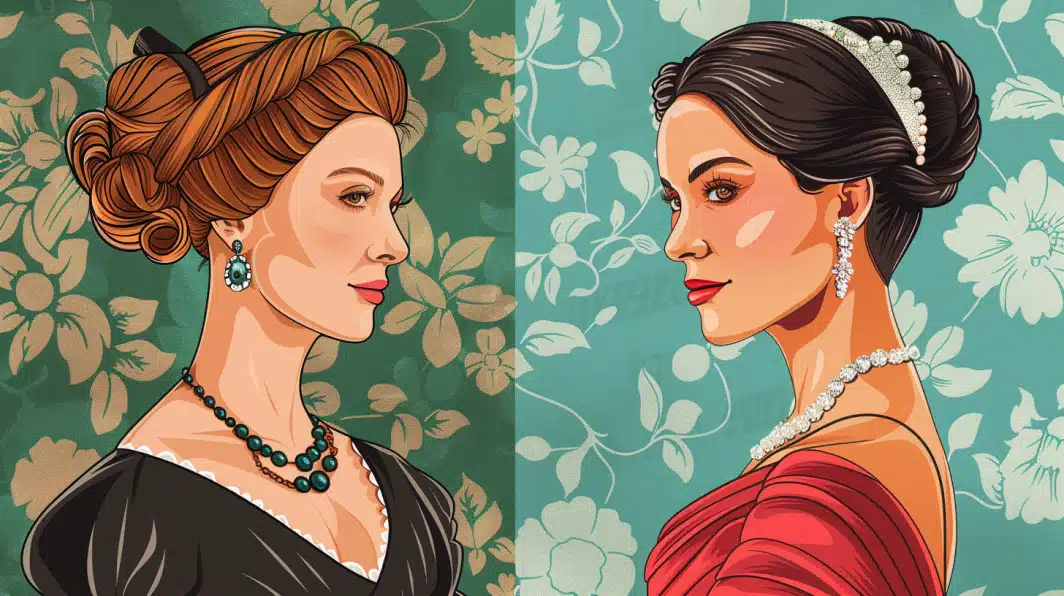


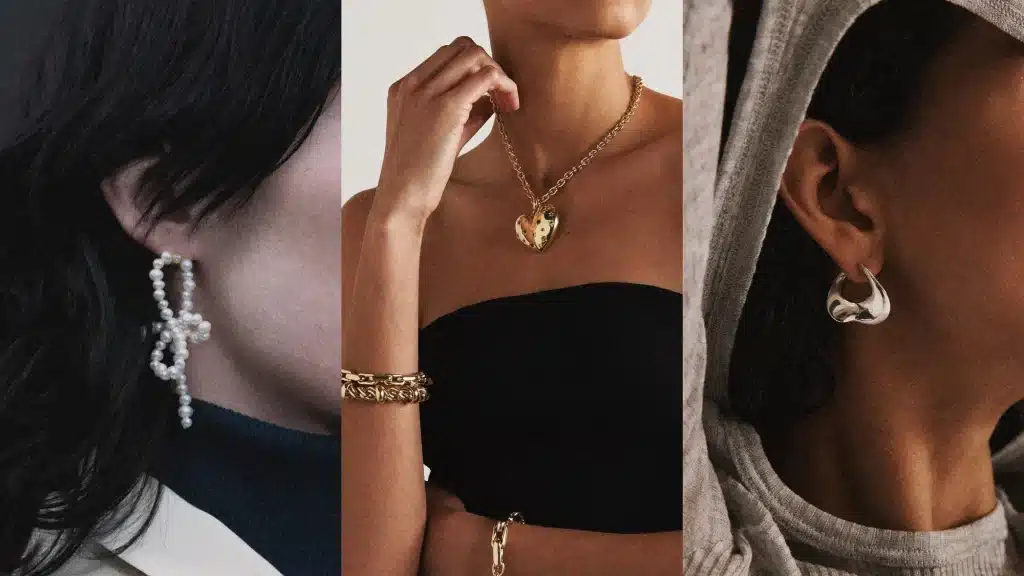






One Comment
пин ап зеркало: pin up вход – пин ап вход